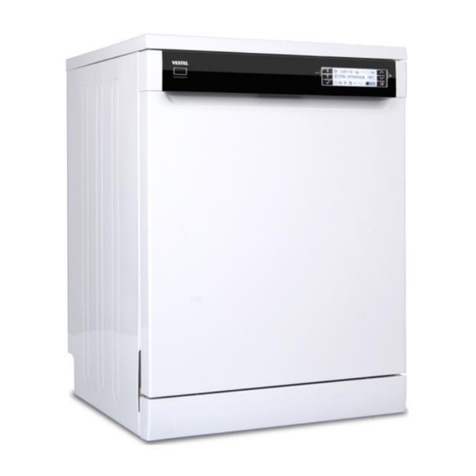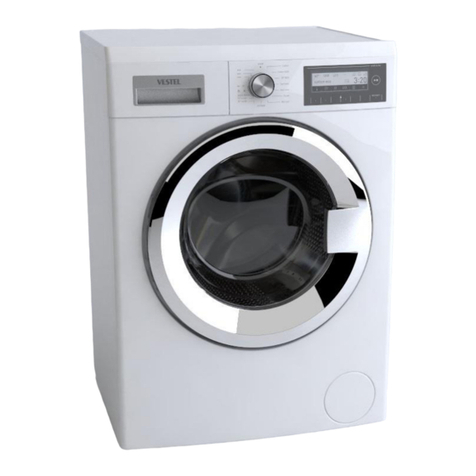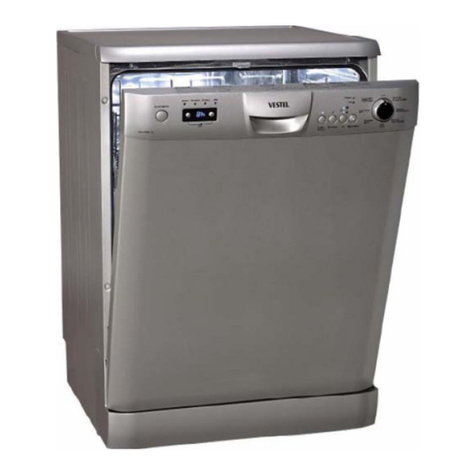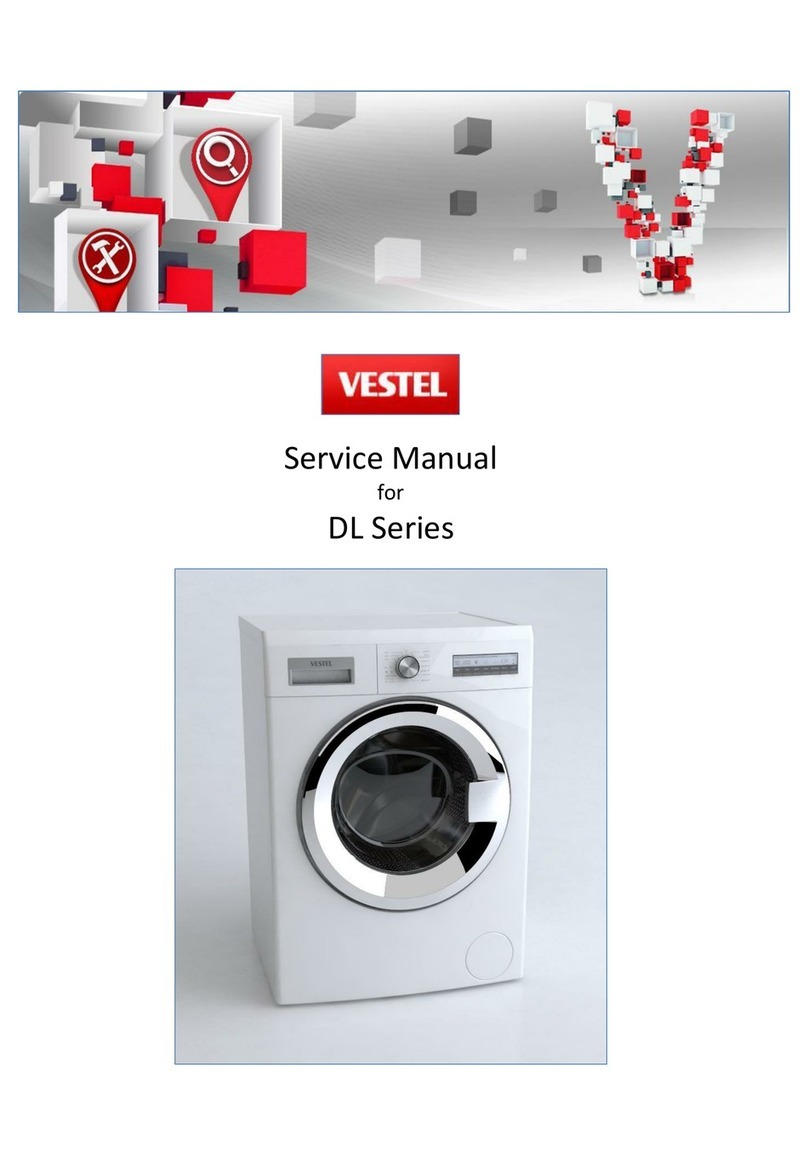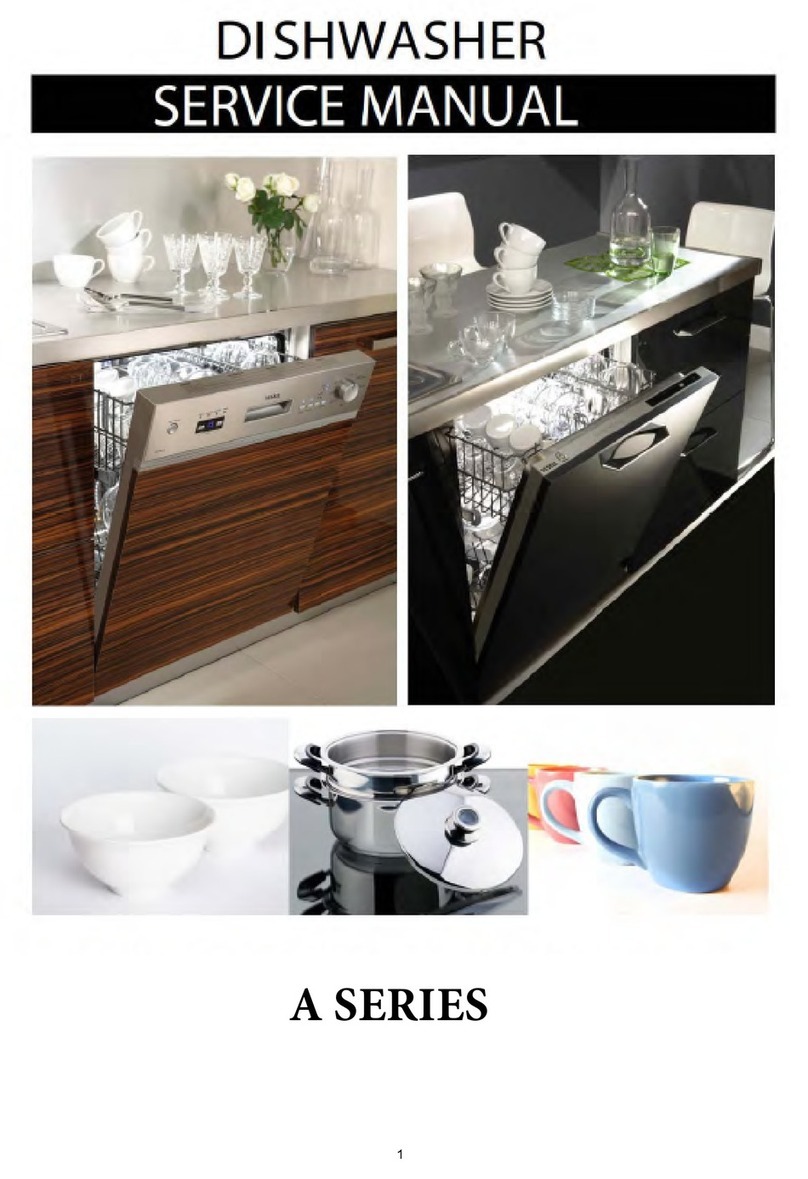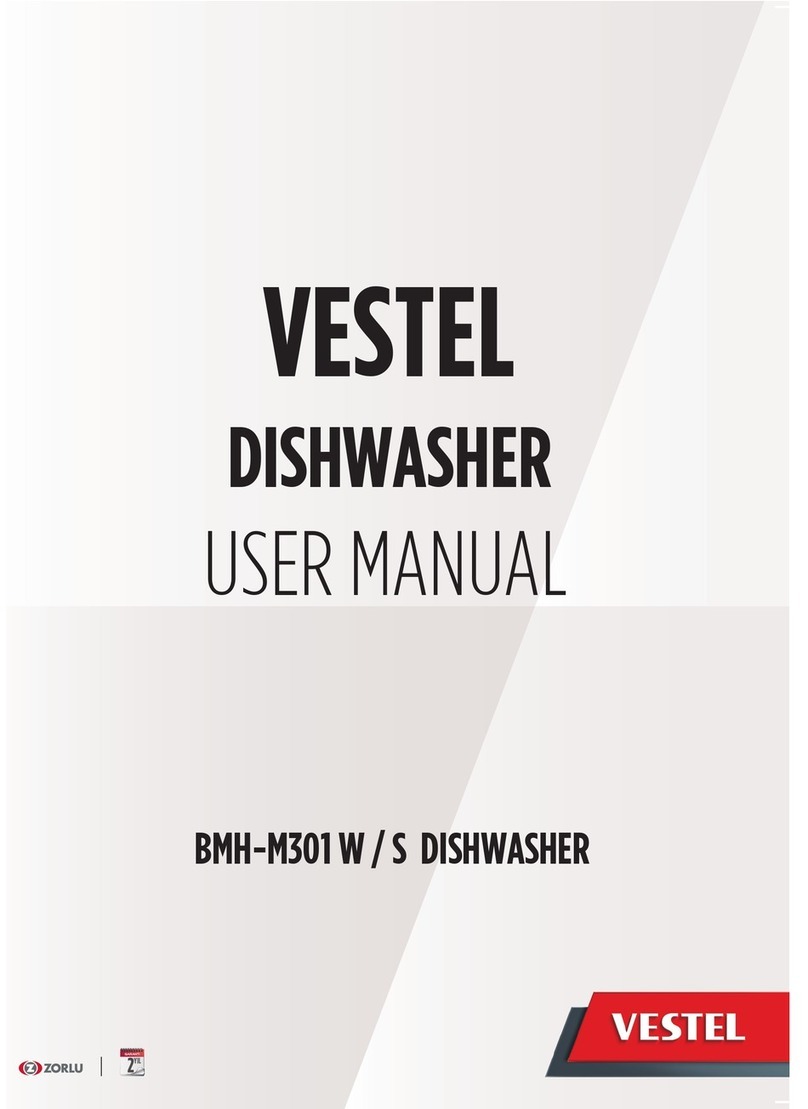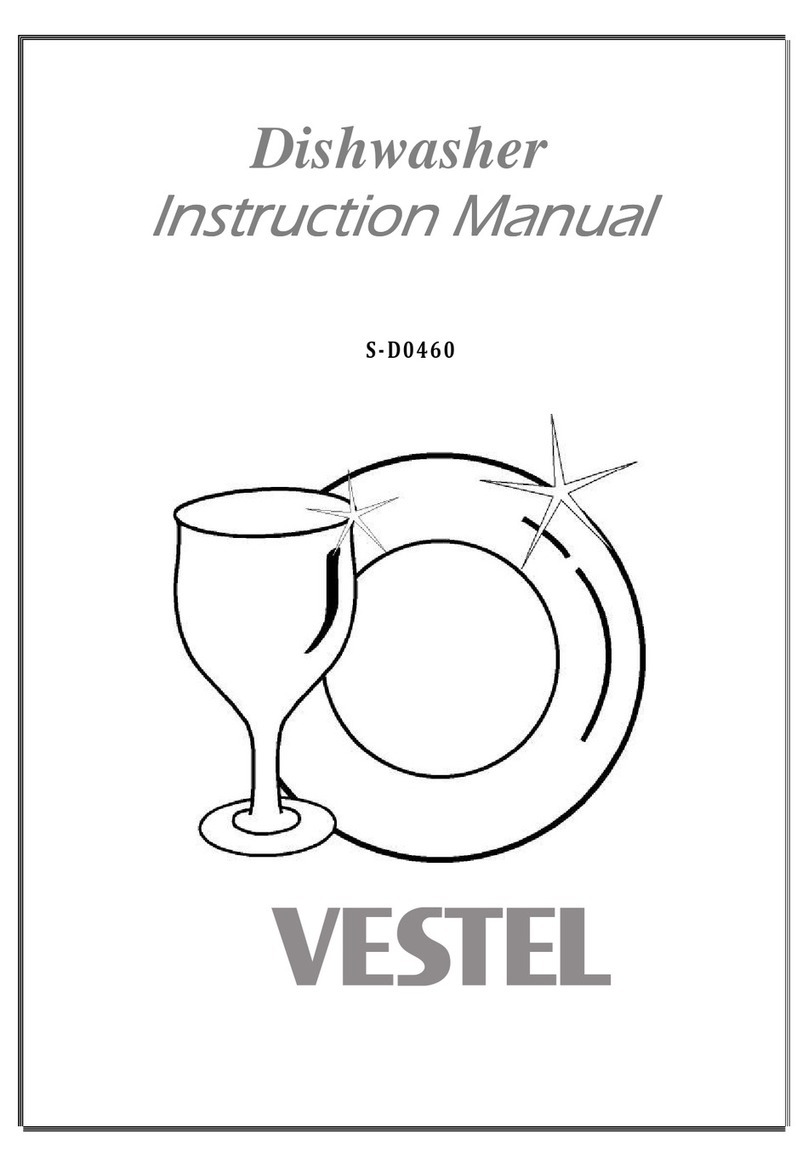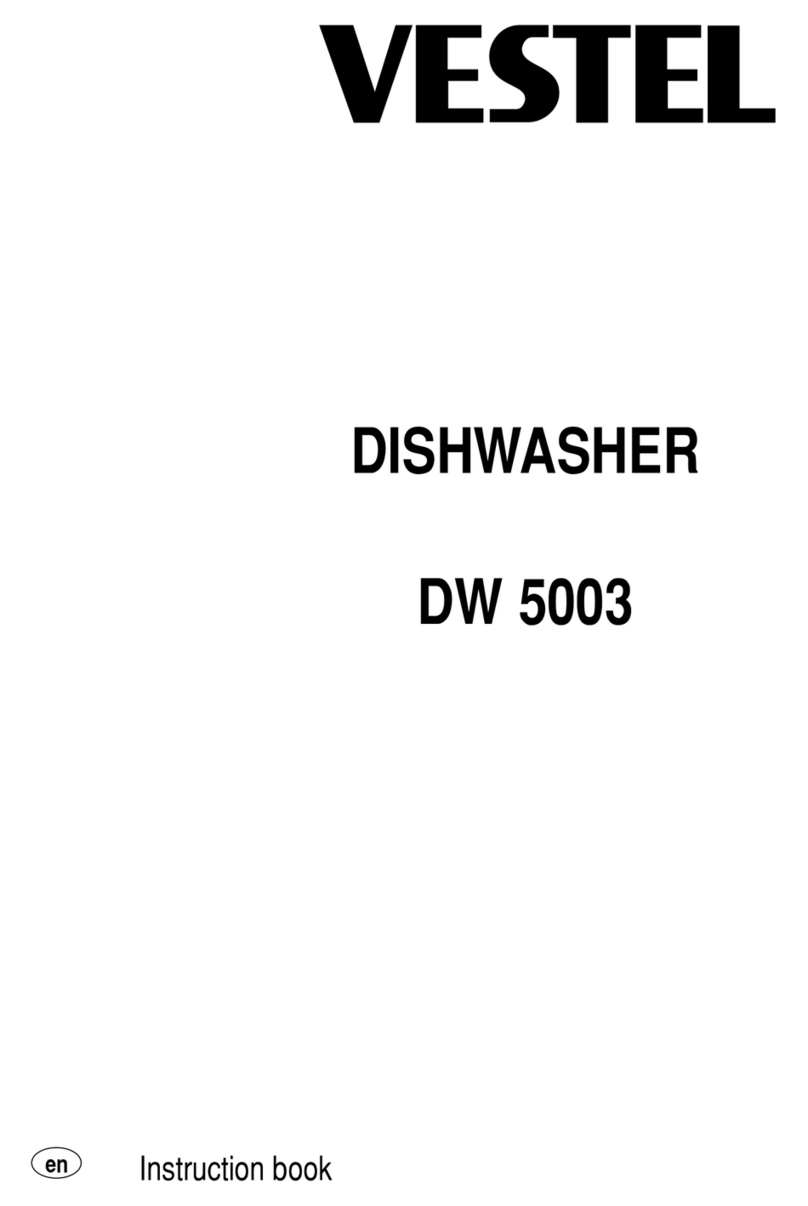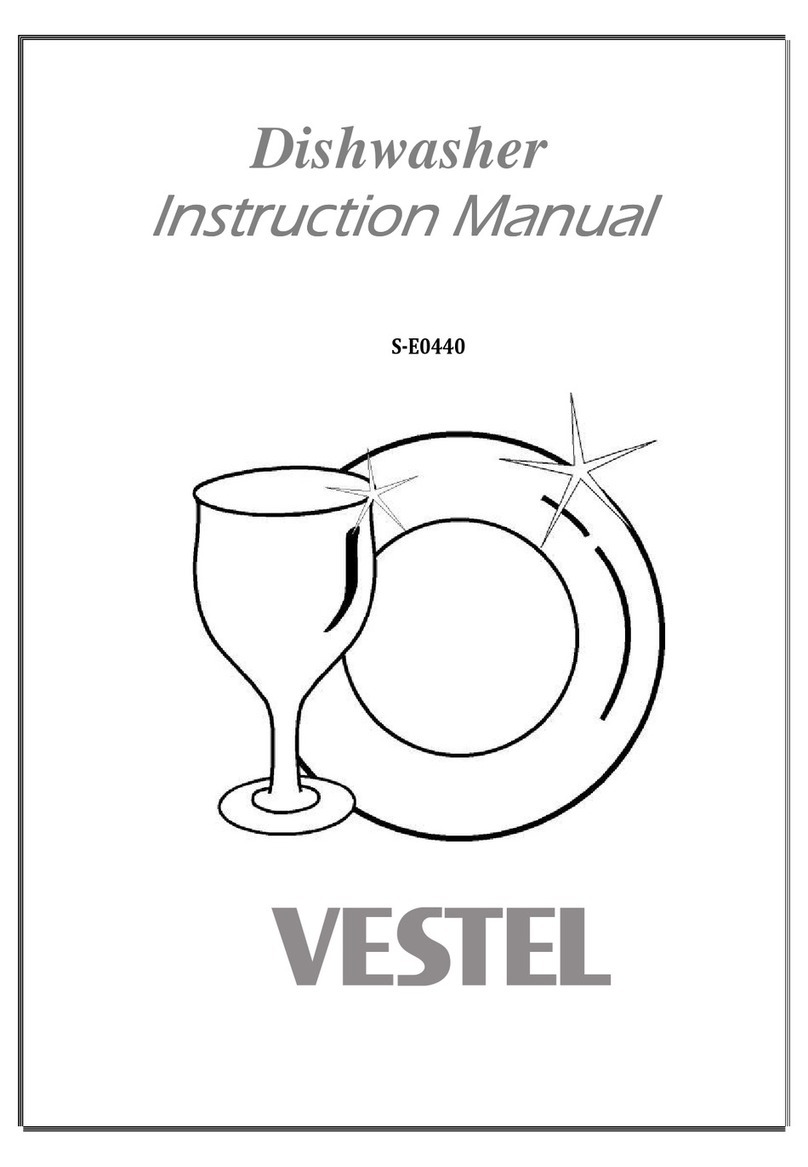3
Safety instructions
It is most important that this instruction book should be
retained with the appliance for future reference. Should
the appliance be sold or transferred to another owner, or
should you move house and leave the appliance, always
ensure that the book is left with the appliance in order that
the new owner can get to know the functioning of the
appliance and the relevant safety information.
This information has been provided in the interest of your
safety. You MUST read it carefully before installing or
using the appliance.
Installation
●Check your dishwasher for any transport damage. Never
connect a damaged machine. If your dishwasher is
damaged, you shou d contact your supp ier.
●For safety reasons it is dangerous to a ter the specifications
or attempt to modify this product in any way.
●Any e ectrica and p umbing work required to insta this
app iance shou d be carried out by a qua ified and
competent person.
●Care must be taken to ensure that the app iance does not
stand on the e ectrica supp y cab e.
●The sides of the dishwasher must never be dri ed to
prevent damage to hydrau ic components.
Child safety
●This app iance is designed to be operated by adu ts.
●Chi dren shou d not be a owed to tamper with the contro s
or p ay with the product.
●Packaging parts may be dangerous for chi dren, who cou d
even be suffocated! You shoud therefore keep a
packaging we away from chi dren.
●The water in your dishwasher is not for drinking. Detergent
residues may sti be present in your machine. Keep
chi dren we away from your dishwasher when the door is
open.
●Keep a detergents in a safe p ace out of chi dren's reach.
Your dishwasher in day-to-day use
●Items that are contaminated by petro , paint, stee or iron
debris, corrosive, acidic or a ka ine chemica s must not be
washed in this dishwasher.
●Under no circumstances shou d you open the door whi st
the app iance is in operation, especia y during the washing
phase, hot water may escape. However, if the door is
opened, a safety device ensures that the machine stops.
●On y use products (detergent, sa t and rinse aid) specifica y
designed for use in dishwashers.
●Long b aded knives stored in an upright position are a
potentia hazard.
●Long and/or sharp items of cut ery such as carving knives
must be positioned horizonta y in the upper basket.
●When finishing oading or un oading c ose the door, as an
open door can be a hazard.
●Do not sit or stand on the open door.
●Iso ate the app iance from the power supp y and turn off the
water supp y after use.
●This product shou d be serviced by an authorised service
engineer, and on y genuine spare parts shou d be used.
●Under no circumstances shou d you attempt to repair the
machine yourse f. Repairs carried out by inexperienced
persons may cause injury or serious ma functioning.
Contact your oca consumer services department. A ways
insist on genuine spare parts.
Disposal
Dispose of the dishwasher packaging materia correct y.
A packaging materia s can be recyc ed.
P astic parts are marked with standard internationa
abbreviations:
>PE< for po yethy ene, e.g. sheet wrapping materia .
>PS< for po ystyrene, e.g. padding materia (a ways CFC-
free).
>POM< for po yoxymethy ene, e.g. p astic c ips.
Cardboard packaging is manufactured from recyc ed paper
and shou d be deposited in the waste paper co ection for
recyc ing.
As and when you cease to use your dishwasher and withdraw
it from service, your shou d render it unserviceab e before
having it disposed of.
Warning! Chi dren at p ay cou d ock themse ves in your
dishwasher or otherwise endanger their ives. Therefore cut off
the power supp y cab e and make the door c osing device
unusab e to prevent chi dren from being trapped inside.
For the disposing of the app iance p ease take it to a recyc ing
centre or to your dea er who wi , for a sma contribution to the
costs, dispose it for you.
Economical and
ecological dishwashing
●Ensure that the water softener is correct y adjusted.
●Do not pre-wash under running water.
●Se ect the wash programme to suit the nature and degree of
the soi ing on the dishes.
●Do not use more detergent, specia sa t and rinse aid than is
recommended in these operating instructions and by the
manufacturer of the respective product.
